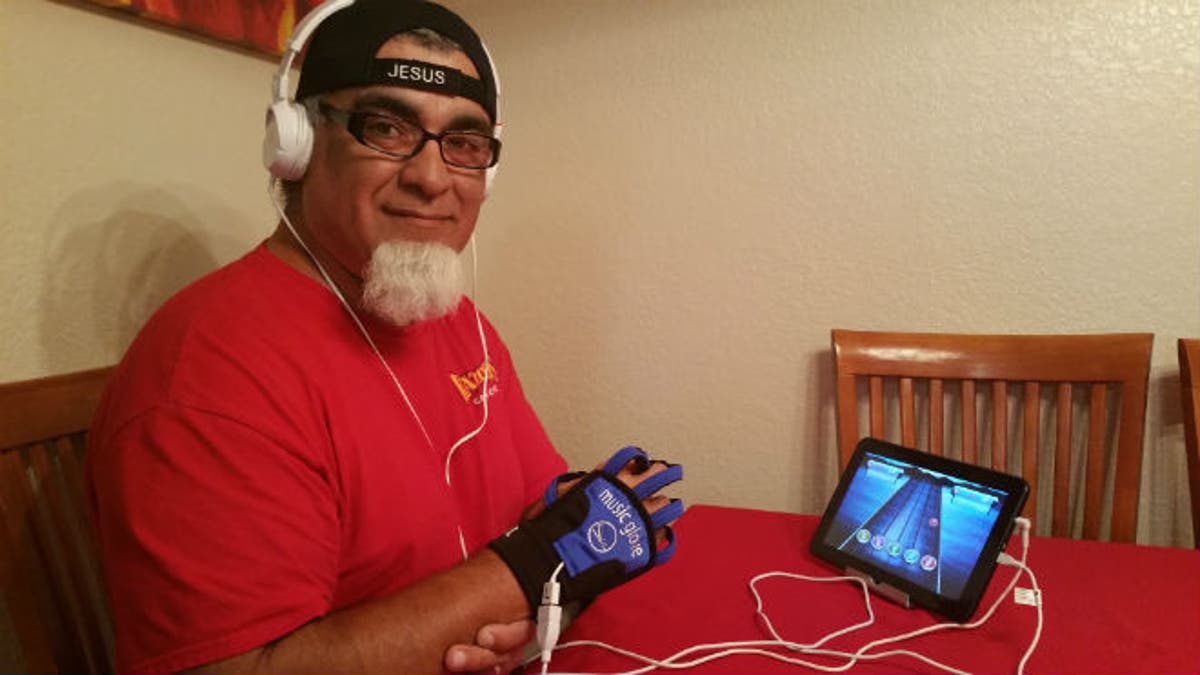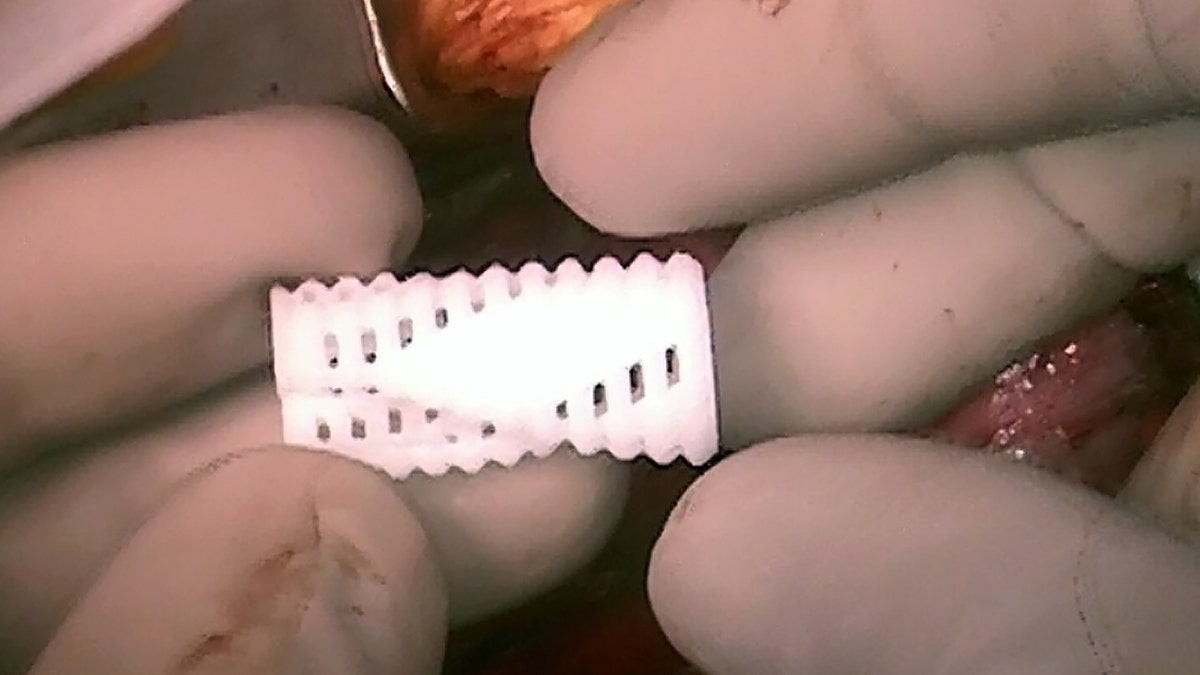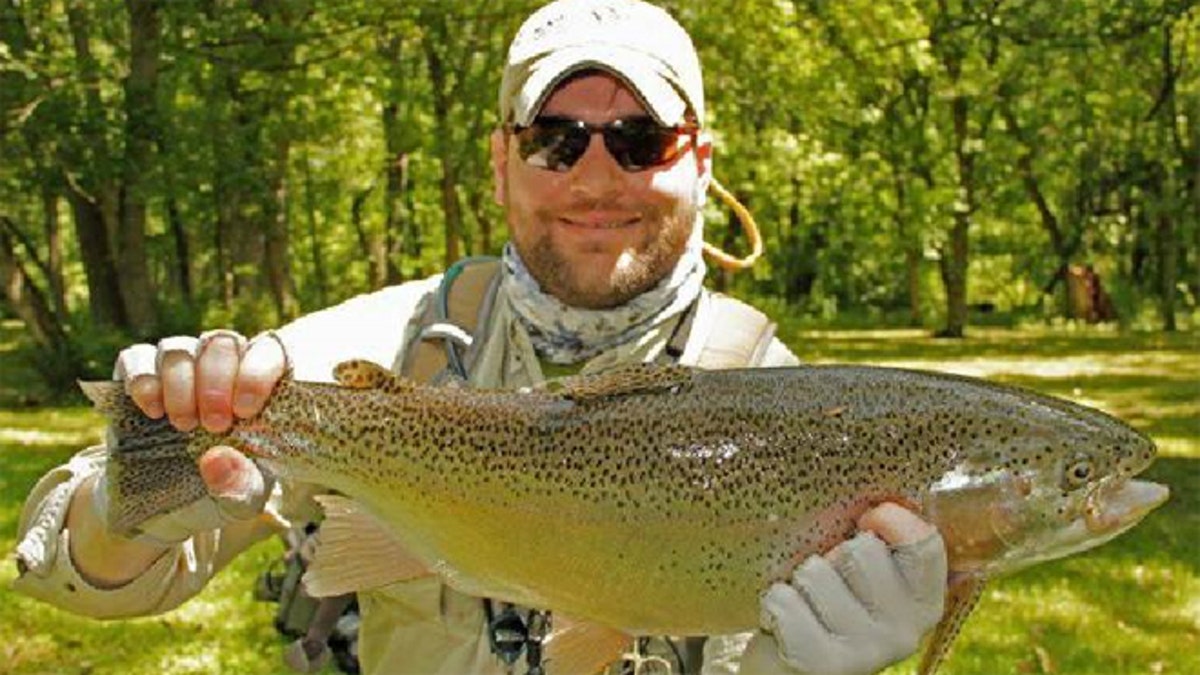American medicine has transformed our everyday lives in ways our forefathers would have never thought possible. From 3-D printing to vaccinations and treating traumatic brain injuries, the advancements have meant improved and elongated lives for countless Americans. Whether it is caring for our wounded warriors, restoring health to those who are suffering, or performing life-saving procedures on our unborn children, our achievements in the medical field have given us plenty of reasons to be proud Americans.
Here are a few noteworthy innovators in American medicine:
1. Needleless vaccine patch offers pain-free way to protect against disease

Sawicka, shown wearing a sample of the ImmunoMatrix patch, with her medal for winning first prize in the graduate division of the national Collegiate Inventors Competition. (image courtesy subject)
Imagine being able to vaccinate yourself against disease at home, by yourself, without doctor’s offices— or needles. Then imagine using that same technology to vaccinate hundreds of people in third world countries to avoid epidemic situations. Thanks to one woman’s invention, this may soon be a reality.
Kasia Sawicka, 34, of Long Island, New York, has invented a needleless vaccination patch that has been successfully tested and used to combat the flu, whooping cough, anthrax and other antigens. The patch, called the ImmunoMatrix, is a non-invasive device that uses nanofibers to hold and effectively deliver a vaccine through the skin.
Read more:
2. Interactive rehabilitation device restores vet’s use of hand after stroke

David Villareal using his MusicGlove.
After suffering from four strokes in two years, the right side of David Villareal’s body was completely debilitated. The 53-year-old retired Marine could no longer play music, his profession and passion, and was often left immobile from painful muscle spasms.
Now, three years after his first stroke, he has regained mobility— and reignited his love for music— thanks to an innovative upper extremity rehabilitation device, the MusicGlove. The device was invented by Nizan Friedman when he was a biomedical engineering postdoctorate student at the University of California, Irvine. While studying, Friedman worked under David Reinkensmeyer, a leader in the field of neurorehabilitation and Mark Bachman, a leader in miniaturized bionic and assistive devices.
Read more:
3. 3-D printed device used to treat life-threatening airway disease in infants

Final 3D-printed tracheobronchial splint used to treat the left bronchus of patient 2. The splint incorporated a spiral to accommodate concurrent use of a right bronchial splint and growth of the right bronchus. (Morrison et al., Science Translational Medicine)
Doctors have for the first time treated infants with a rare, life-threatening airway disease by using a 3D-printed device. The children suffer from trachealbronchomalacia, or the weakening and collapsing of airways, which affects about one in every 2,000 children worldwide. Patients with the condition are unable to fully exhale and typically must undergo tracheostomies, wherein breathing tubes are inserted into their necks and they are placed on artificial ventilators. For these children, a simple cold could require an extended hospital stay in the intensive care unit.
However, the device, an airway splint tailored to each child’s anatomy, is designed to adapt to tissue growth over time and will eventually be absorbed into the body. Doctors consider one of the patients who had the splint implanted three years ago cured of the disease.
Read more:
4. Project Healing Waters: Helping wounded soldiers, veterans heal through fly fishing

Captain (ret.) David Folkerts (Project Healing Waters)
Since 2005, Project Healing Waters has served as a place of healing for both active-duty service personnel and veterans. The nonprofit runs in all 50 states, offering more than 180 programs that meet on a weekly basis with fishing trips and an annual 2-Fly tournament, which relies solely on volunteers and donations.
From fly fishing 101 to group outings, military members are treated to one-on-one training and guidance from fishermen enthusiasts and fellow soldiers. The program provides basic fly fishing, fly casting, fly tying and rod building classes, as well as clinics with participants ranging from beginners who have never fished before, to those with prior fly fishing and tying experience who are adapting their skills to their new abilities.
Read more:
5. Teen undergoes innovative eye surgery in hopes of achieving US Air Force dream

(Photo credit: Boxer Wachler Vision Institute)
When 15-year-old Jon Dase was later diagnosed with Keratoconus, a disease that causes vision loss, distortion, double-vision and multiple images, impacting everything from reading text on paper, to driving at night, he thought he military dreams were over. Jon’s father is an active-duty U.S. Marine, his paternal grandfather was also a Marine, and both of his maternal grandparents were in the U.S. Army. His brother Chris plans on joining the U.S. Marines Corps when he turns 18, and Jon has wanted to join the U.S. Air Force since he was 10.
The military, however, maintains a policy that prevents men and women from entering the service if they have had keratoconus— even if they’ve received corrective surgery, according to the U.S. Air Force website. Dr. Brian S. Boxer Wachler, of the Boxer Wachler Vision Institute in Beverly Hills, Calif., invented a surgery— called Holcomb C3-R— that would eventually halt the progression of Jon’s Keratoconus. The procedure serves as an alternative to a cornea transplant. The non-invasive surgery involves applying a crosslinking solution to the cornea, which is activated with a special light. That combination strengthens the eye’s collagen fibers and prevents further bulging, thus stabilizing the keratoconus. Dase and his family have now reached out to their local representatives in the hopes of petitioning the military to make changes in their eyesight policy for people having corrective surgery.
Read more:
6. Defying the odds: US Army veteran with above-the-knee amputation runs NYC Marathon

(Fox News)
United States Army veteran Edward Lychik joined the military because he wanted to be part of something bigger than himself. But on his 21st birthday, while serving in Afghanistan as a combat engineer, Lychik was sitting in the gunner’s hatch of a tank when a rocket struck his vehicle. Lychik lost most of his left leg in the attack, which doctors later amputated above the knee. Gone were his knee joint, ankle joint and hip joint on that side of his body after undergoing a procedure called hip disarticulation. His medical team said the only way he would be able to walk again was with crutches and assistance.
As if by a dream come true, a custom-designed prosthetic leg with a curved blade and hip socket has enabled Lychik to finish four marathons, including the Boston Marathon in March, since his injury. On Sunday, he’ll run his fifth when he competes in the New York City Marathon.
Read more:
